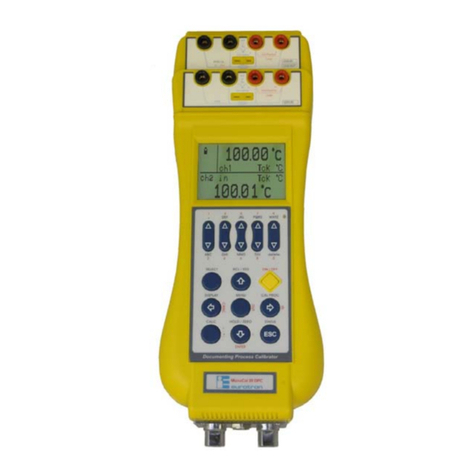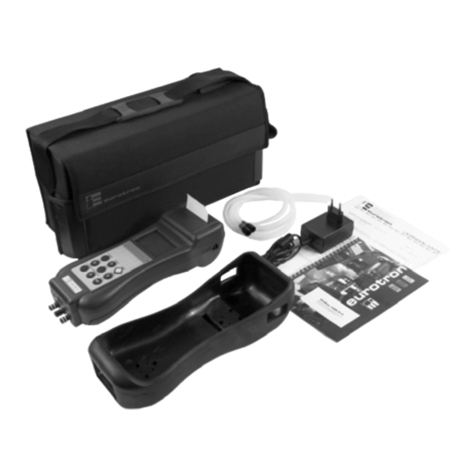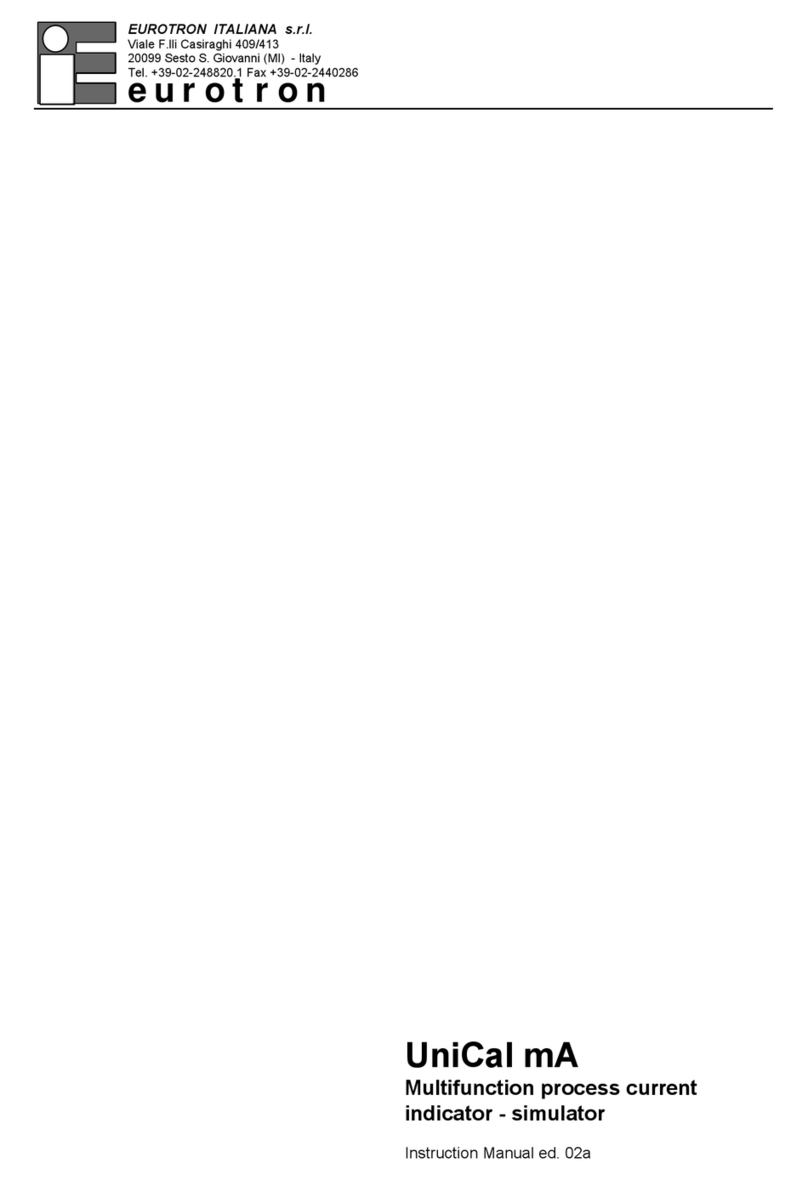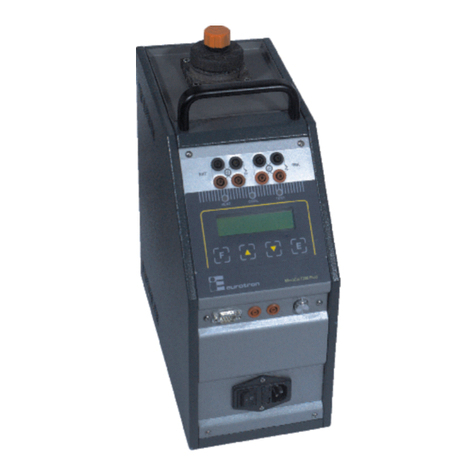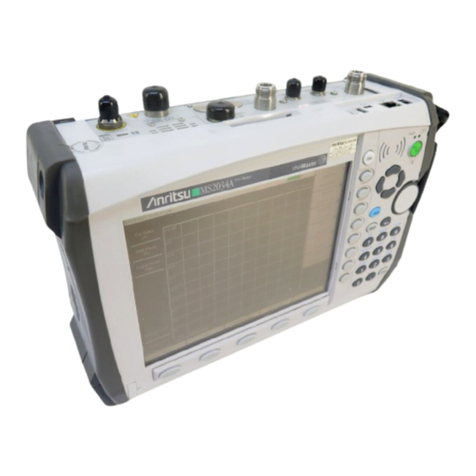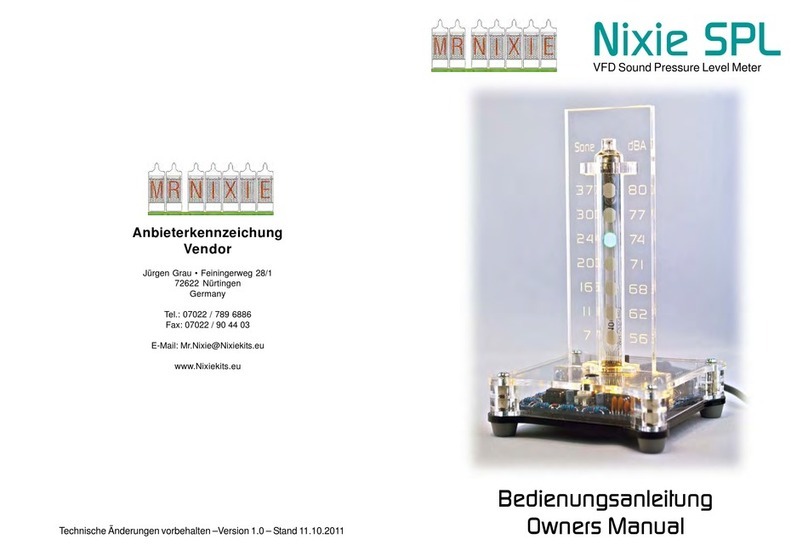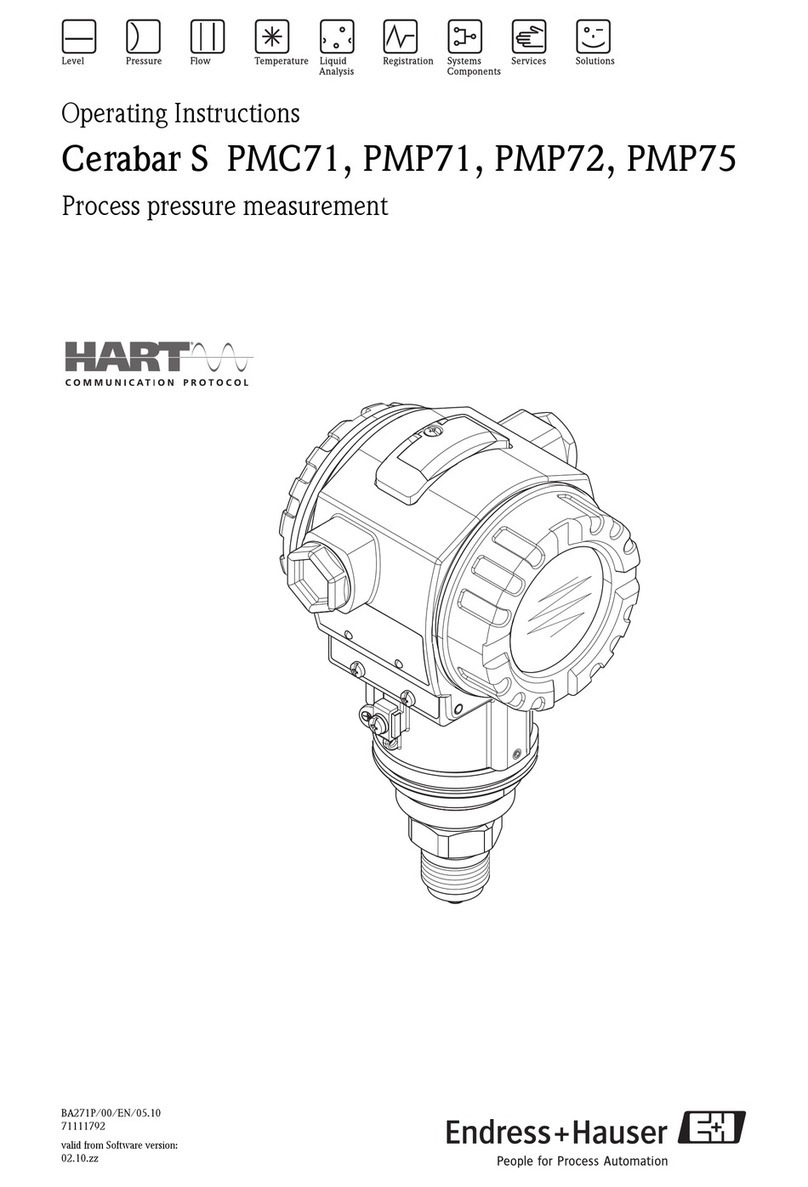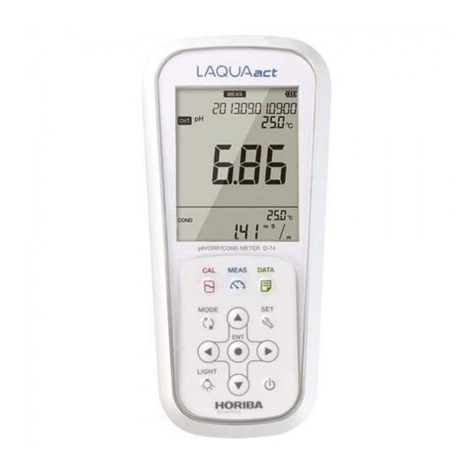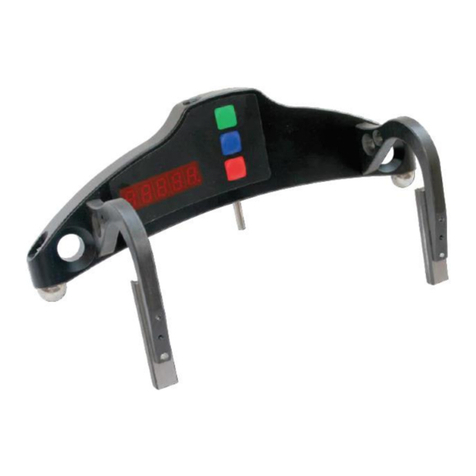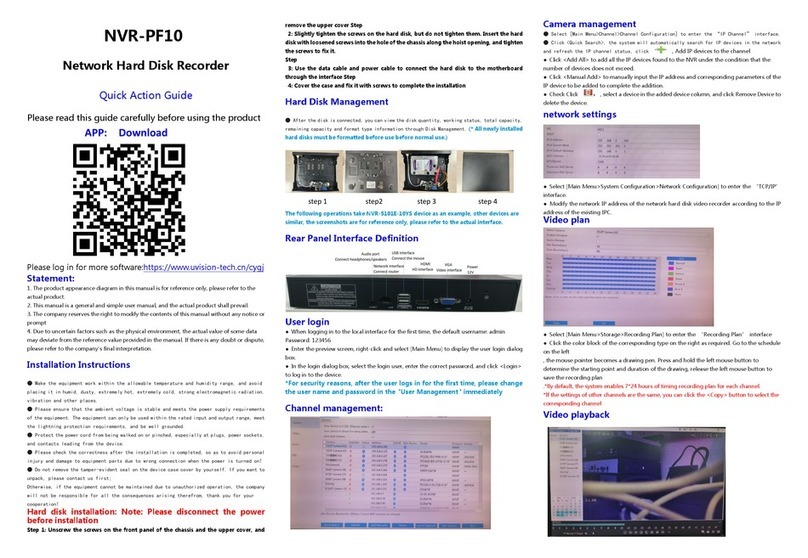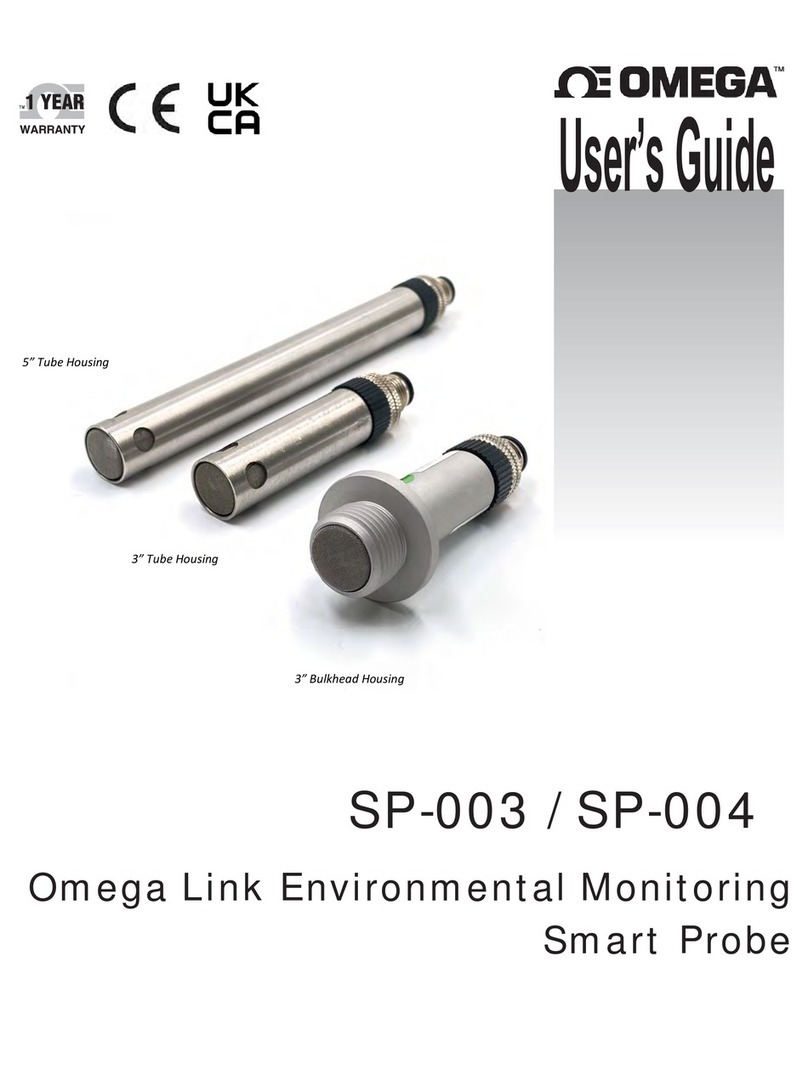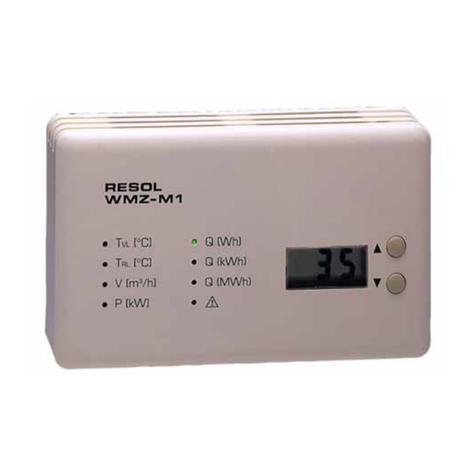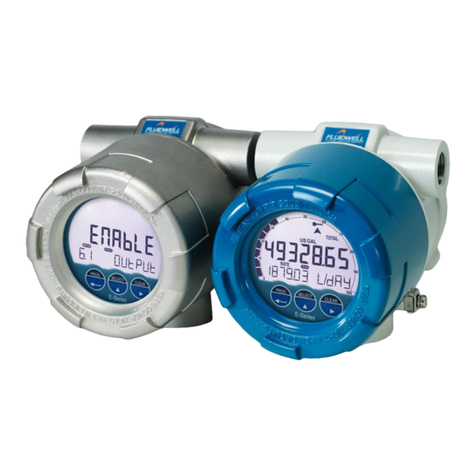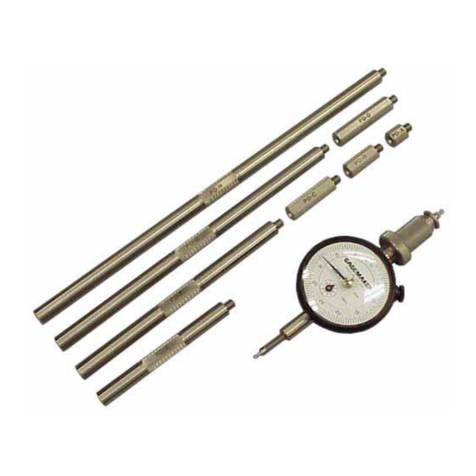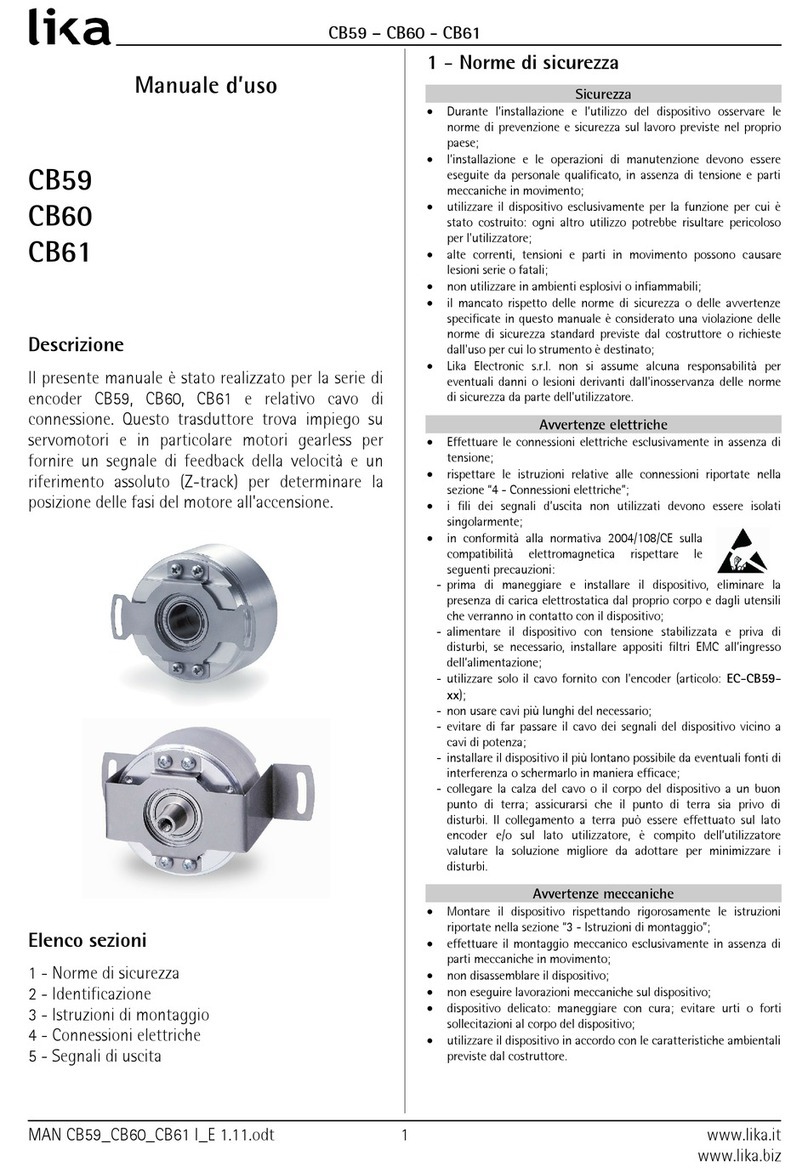Eurotron PTB 150 User manual

2
PTB150-MAN-V14.0 PTB 150-157 Instruction Manual
INSTRUCTIONS MANUAL REV. DATA
PTB150/PTB157 13.2 Sep 2019
VALID FROM SERIAL NUMBER K322 11
INDEX
WARNING ..........................................................................................................................................................3
1 - INTRODUCTION...........................................................................................................................................4
1.1 - Purpose and summary of instructions ....................................................................................................4
2 - SCOPE OF SUPPLY.....................................................................................................................................5
3 - GENERAL RECOMMENDATIONS...............................................................................................................8
4 - SAFETY INSTRUCTIONS ............................................................................................................................9
5 - PREPARATION OF OPERATION ..............................................................................................................10
5.1 - Installation.............................................................................................................................................10
5.1.1 - Removal of packaging....................................................................................................................10
5.1.2 - Positioning the calibrator................................................................................................................10
5.1.3 - Supply ............................................................................................................................................10
6 - OPERATION PROCEDURE .......................................................................................................................12
6.1 - Operation description............................................................................................................................12
6.2 - Description of instrument......................................................................................................................12
6.2.1 - Thermo regulator............................................................................................................................12
6.2.2 - Signalling lamps.............................................................................................................................12
6.2.3 - Main switch.....................................................................................................................................12
6.2.4 - Carrying handle..............................................................................................................................12
6.2.5 - Heating & cooling system...............................................................................................................13
6.2.6 - Equalising block .............................................................................................................................13
6.2.7 - Temperature sensors.....................................................................................................................13
6.3 - Start-up instructions..............................................................................................................................14
6.4 - Use of the functions..............................................................................................................................16
6.4.1 - Reading of external probes (TC version only) ...............................................................................16
7 - MAINTENANCE INSTRUCTIONS ..............................................................................................................18
8 - MAINTENANCE SEQUENCE.....................................................................................................................18
9 - TYPICAL FAULTS.......................................................................................................................................19
10 - APPENDICES ...........................................................................................................................................20
10.1 - Frontal panel description ...................................................................................................................20
10.2 - Microprocessor regulator: control description.....................................................................................26
10.3 - Communication Protocol Rs232/C......................................................................................................28
10.4 - Standard equipment spare parts list...................................................................................................31
10.5 - Declaration of conformity and check report........................................................................................31
10.6 - Drawing and wiring diagram ...............................................................................................................31

3
PTB150-MAN-V14.0 PTB 150-157 Instruction Manual
WARNING
Hazardous voltages are present in this electrical equipment during operation.
Non-observance of the safety instruction can result in severe personal injury or property
damage.
Only qualified personnel should work on or around this equipment after becoming
familiar with all warnings, safety notices, and maintenance procedures contained herein.
Only qualified personnel or our personnel should work on this equipment for
maintenance operation.
The successful and safe operation of this equipment is dependent on proper handing,
operation and maintenance.
Don not use the instrument for any application other than calibration of temperature, any
other use of the instrument may cause hazards to the user.
Use the instrument only in normal environmental conditions.
Electrical and electronic equipments with this symbol cannot be thrown away in public dump
sites. According to the EU directive 2002/96/EC, the European users of electrical and
electronic equipment have the opportunity to return to the distributor or manufacturer used
equipment purchasing a new equipment. The illegal disposal of electrical and electronic
equipments is punished by pecuniary administrative sanction.
SYMBOLS BEING USED IN THIS MANUAL OR ON THE INSTRUMENT
CAUTION: HOT SURFACE OR PART
CAUTION: REFER TO ACCOMPANING DOCUMENTS
CAUTION: RISK OF ELECTRICAL SHOCK
Note:
In this manual: where not specified, the numbers in parentheses make reference to the annexed
drawing.

4
PTB150-MAN-V14.0 PTB 150-157 Instruction Manual
1 - INTRODUCTION
1.1 - Purpose and summary of instructions
This manual contains the use and maintenance instructions valid for the following equipment:
Portable Temperature Calibration model: PTB150-157
The instructions reported in this manual, for the above mentioned equipment, are those relevant to:
•Start-up preparation
•Operation description
•Using of the equipment
•Re-calibration procedure
•Preventive maintenance
•Typical faults and their remedies
Users must observe all the usual safety rules out in this manual for own security and to avoid
equipment failure.

5
PTB150-MAN-V14.0 PTB 150-157 Instruction Manual
2 - SCOPE OF SUPPLY
1 - Name:
•Portable Temperature Calibrator PTB150, including accessories, as listed. (reference to paragraph 2.7)
2- Technical data:
•Operative range (PTB150) : -27÷ +150°C @ 22°C
•Operative range (PTB157) : -50÷ +150°C @ 22°C
•Stability : ±0.02°C
•Resolution : 0,01/0,1°C
•Reading accuracy : ±0,15°C **
•Regulation & reading probe : Pt 100 class A din43760
•Auxiliary inputs : Pt100 and Tc J, K, N, R, S, E(TC version only)
•Reading : °C, °F, K
•Serial communication : RS 232
•Increase gradient : 20°C/1’ **
•Heating time : 15’ from 20 to 140°C (+ 6’ for stability )
•Decrease gradient : 22°C/1’ **
•Cooling time : 12’ From 140 to 20°C (+ 6’ for stability )
•Cooling time : 15’ From 20 to -25°C (+ 6’ for stability)
•Standard block : Ø35 x 135mm
•Temperature ramps : min. 0,1°C/1’
•Thermostat test : 12 Vcc.
•Voltage : 230V 50Hz (100/115V by required) 50/60Hz.
•Power : 300VA.
•Electric protection : 2,5A T. fuse (3A F for 100-115V)
•Calibrator measurements : 160x370 x h. 330 mm
•Measurements of case : 520x330 x h. 500 mm
•Weight : 10 Kg only calibrator; 17Kg with travelling-case.
•Structure in flanged plate with rotating handle.
•Thermostatic well in aluminium with a hole ø35mm.
•Reducer inserts: ø34,7x135mm.
•Regulation of the temperature with PID controller.
•Switch test.
•Internal cryostat with Peltier elements.
•Electronic control components thermally insulated with forced air system.
•Removable upper protection grid.
•Total absence of environmentally harmful cooling liquids.
•Socket with main cable and protection fuses.
•Display back light control.
•Electromagnetic compatibility : Emission EN50081-1
Immunity EN50082-2
NOTE: The data marked with ** has been recorded at an ambient temperature of 20°C±3, power
supply 230V±10%, with Pt100 ø6 inserted in the block.
The above-mentioned data keep valid for one year after the issuing of the calibrating
certificate; afterwards it is necessary to carry out the oven re-calibration.
Environmental range: temperature +5 a +45°C, U.R. max. 80%
CONTROLLER DATA
* Display : 2 lines 20ch x line (3,2x5,5) back lighting.
* processor : 80C552 (family 80C51 CMOS).
* A/D converter Σ-Δ24 bits
* E2PROM memory.
* Serial communication RS232 insulated.

6
PTB150-MAN-V14.0 PTB 150-157 Instruction Manual
3 - Services (function):
The portable temperature calibrator PTB150-157 has been designed for:
•Control and calibration of temperature sensors, in the laboratory and in the field, in conformity with ISO
9000 standards.
•Calibration of thermostats with light indication when electric contact close.
•Thermal test on materials.
•Possibility to set temperature ramps.
The calibrator has been designed to reduce the EMC effect in accordance with the harmonised regulation for
residential, commercial, light industry and heavy industry.
N.B: The Pulsar with the software AQ2sp for WindowsTM can carry out:
complete control of the oven from the PC
manual or automatic calibration of one or more probes
cyclic life or stress test on temperature sensors
automatic threshold thermostat test
filling and printing of the results obtained, guaranteeing that the ISO 9000 standard are observed
4 - Quantity:
•1 piece.
5 - Manufacturer:
Eurotron Instruments (UK) Ltd
Unit 18 Austin Way, Royal Oak Industrial Estate
NN11 8QY- Daventry, United Kingdom
T+ 0044 (0) 1327 871044 F: 0044 (0)1327 301 255
www.eurotron-uk.com
6 - N° of correspondent catalogue sheet:
•PTB-D-V02 ( 15112011)
7 - List of first equipment accessories
PTB150-TS-230-UK
Temperature Calibrator, -48/150 ⁰C TS version 230 VAC
PTB150-TS-115-US
Temperature Calibrator, -48/150 ⁰C TS version 115 VAC
PTB150-TS-230-EU
Temperature Calibrator, -48/150 ⁰C TS version 230 VAC
PTB150-TC-230-UK
Temperature Calibrator, -48/150 ⁰C TC version 230 VAC
PTB150-TC-115-US
Temperature Calibrator, -48/150 ⁰C TC version 115 VAC
PTB150-TC-230-EU
Temperature Calibrator, -48/150 ⁰C TC version 230 VAC
PTB157-TS-230-UK
Temperature Calibrator, -70/150 ⁰C TS version 230 VAC
PTB157-TS-115-US
Temperature Calibrator, -70/150 ⁰C TS version 115 VAC
PTB157-TS-230-EU
Temperature Calibrator, -70/150 ⁰C TS version 230 VAC
PTB157-TC-230-UK
Temperature Calibrator, -70/150 ⁰C TC version 230 VAC
PTB157-TC-115-US
Temperature Calibrator, -70/150 ⁰C TC version 115 VAC
PTB157-TC-230-EU
Temperature Calibrator, -70/150 ⁰C TC version 230 VAC
PTB150-INS-01
blank insert DN.35x135 mm
PTB150-INS-02
Insert 35x135 mm 6 holes: φ.3,5-4.5-5.5-6,5-8,5-10,5 mm.
PTB150-INS-03
Insert DN35x135 mm custom ( 1 to 3 holes from 3,5 to 20mm)
PTB150-INS-04
Insert DN 35x135 mm custom ( 4 to 6 holes from 3,5 to 20mm)
PTB150-INS-05
Insert DN.35x135 mm custom ( 7-10 holes from 3,5 to 20mm)
PTB150-INS-06
Multi-hole insert DN35x135 mm with 2 holes: φ 6.5- 19.5 mm.
PTB150-INS-IR
Black body Insert DN 35x135 c/w Reference Sensor
PTB150-TC-OPT-01
SRS-PRT-03-A168B reference sensor and special UKAS Cal

7
PTB150-MAN-V14.0 PTB 150-157 Instruction Manual
PTB-CASE-02
Aluminium Transport Case with space for accessories(PTB/PLB)
PTB-CASE-01
Vinyl Case with Pockets for accessories (PTB/PLB)

8
PTB150-MAN-V14.0 PTB 150-157 Instruction Manual
3 - GENERAL RECOMMENDATIONS
➔ATTENTION
The processor regulator has been configured in factory with the parameters suited
to work in the respect of the technical specifications.
Don’t change these parameters to avoid malfunction or breaking of the calibrator
with risks of serious personal injury.
- Position of the probe:
To obtain the best result, follow the advises:
•Measure the diameter of the probe being checked.
•Use the reduction insert; check that the diameter of the hole is at least 0.3mm bigger than the
diameter of the probe (figure1).
•Put the insert in the equaliser block only at ambient temperature, using the tweezers.
•Avoid using holes that are too accurate and do not force the probes into the block.
•Insert the probe up to the bottom of the block: the sensitive element is in the optimal calibration zone
(figure 2)
•Calibration with a reference: take care to position the two probes, the standard one and the
calibration one, at the same dept and as close together as possible (figure 3).
•Always verify the range of the probes to be calibrated before using; the maximum temperature
of the probes should be higher then the temperature of the liquid otherwise the probe could
break.
- Advises:
•The temperature difference is proportional to the difference between the diameter of the probe
and the diameter of the hole.
•Do not insert the probe when the instrument has already reached the set temperature; thermal
shock causes instability and breakage of the sensitive element.
•For the calibration of temperature transducers with special execution, call our technical office
and ask for equaliser blocks with special drillings.
•Inserting a 6mm diameter 20°C probe at 121°C takes about 10 minutes to achieve maximum
stability.
•To reduce the errors it is advisable to insert the probes and the standard probe together in the
insert, if you insert the standard probe in the side hole and the probes in the insert the error at
121°C is about 0,2°C
Fig.1
Fig.3
Fig.2

9
PTB150-MAN-V14.0 PTB 150-157 Instruction Manual
4 - SAFETY INSTRUCTIONS
ATTENTION:
•Due to the fact that the thermostat is a portable instrument to be used in the field, it is very
important to ensure that the socket has been earthed correctly when connecting it to the
electricity supply.
•Carry out the maintenance and repair operation only with the equipment at ambient
temperature and disconnected from the electric power.
•During the use of the calibrator, the upper protection grid may overheat.
•Don’t touch the probe to calibrate when it’s in the block.
•After using wait for the stabilisation at ambient temperature before returning the calibrator to
its carrying case.
•Never put any type of liquid inside the well.
•Don’t change absolutely the configuration parameters.
•Don’t put anything on the top of the calibrator.
•Do not operate the instrument in an excessively wet, oily, dusty, or dirty environment.
•Do not connect any voltage higher to 5V to the input 4-5-15
•Don’t put fuel objects near the calibrator.
...... use common sense any time.
The equipment adopt the following devices to protect operation from hazard:
•Protection grid and cap-block to avoid any contact with the internal block.
•Protection fuses (3)
•Ground conductor.
AFTER EVERY USE AT SUB-ZERO TEMPERATURES REMEMBER TO SET UP 70°-80°C FOR
ONE HOUR IN ORDER TO EVAPORATE THE WATER IN THE WELL THEN SET AMBIENT
TEMPERATURE AND LEAVE FOR SAME MINUTES BEFORE SWITCHING OFF

10
PTB150-MAN-V14.0 PTB 150-157 Instruction Manual
5 - PREPARATION OF OPERATION
•Remove the calibrator from the carrying case and place it on a flat surface.
•Make sure that the instrument has been correctly earthen.
•Supply the oven with line 230V, 50/60Hz (115 o 100V where required) + earth, 3A
•Before start the calibration read with attention the instruction manual, specially the
paragraph 3: - General recommendation -.
5.1 - Installation
5.1.1 - Removal of packaging
The calibrator is equipped with packaging suitable for transport and traditional shipping systems.
Any damage caused during transport must be notified immediately to the transporters and a claim
must be made.
5.1.2 - Positioning the calibrator
Position the calibrator in a safe clean place; make sure that the fan on the bottom of the calibrator
runs free.
**DANGER: The calibrator is suitable for operating at high temperatures with the consequent
danger of fire. Keep it away from any type of inflammable materials and never put
any type of liquid inside the block (reference to paragraph 4).
* WARNING: To avoid any smell in the room it is better to switch on the calibrator outside the
room for the first time
5.1.3 - Supply
The calibrator runs on a voltage of 230 Vac (115-100V by request), single-phase, 50/60Hz. A
2.5mt. cable is supplied with the calibrator fitted with 2 conductors plus earth (2.5mm2). Make sure
that the plant is earthen correctly before switching the instrument on.

11
PTB150-MAN-V14.0 PTB 150-157 Instruction Manual
COMMANDS LIST
POS. DESCRIZIONE
1 SUPPLY SOCKET
2 MAIN SWITCH
3 PROTECTION FUSES
4 SWITCH TEST BUSHES
5 RS-232 SOCKET
7 THERMOREGULATOR +DISPLAY
7.1 HEATING LED
7.2 COOLING LED
7.3 SWITCH TEST LED
15 EXTERNAL PROBES SOCKETS (OPTIONAL)
7
7.1
7.2
7.3
15
5
4
1
3
2

12
PTB150-MAN-V14.0 PTB 150-157 Instruction Manual
6 - OPERATION PROCEDURE
6.1 - Operation description
The PTB calibrator consists of an anticorodal block fitted with ø35mm, into which the sensors to
be calibrated are inserted.
Four Peltier elements provided to heating / cooling the block; a PID µcontroller provided to regulate
the temperature. The regulator control an AC/DC converter the supply the Peltier elements.
A fan mounted in the rear side generates a constant airflow that reduces the temperature of the
case; the fun mounted in the bottom side generates a constant airflow that reduces the
temperature of the block during the cooling.
6.2 - Description of instrument
6.2.1 - Thermo regulator
The thermo-regulator (7) is a PID microprocessor, which can be set from -50 to 150°C.
•DISPLAY UPPER LINE: indication of the temperature measured inside the block.
•DISPLAY LOWER LINE: indication of the set point; external probes if selected, setting
parameters.
• KEY: used to increment (decrement) any numerical parameter. The increment (decrement)
speed is proportional to the time the key remains depressed.
•F KEY: allow access to the various parameters (repeatedly press), access to the various phases
of configuration (press F +).
•E KEY: allow confirming the set parameter.
The calibrator is endowed with eight terminals (optional) that can be set as Pt100 or Tc.
6.2.2 - Signalling lamps
Heating lamp (7.1): it indicates the operation of the Peltier heating system.
Cooling lamp (7.2): it indicates the operation of the Peltier cooling system.
Sw. Test lamp (7.3): it indicates the activation of the contact of the thermostat under test connected
at the plugs (4)
6.2.3 - Main switch
The main switch (2) is frontal of the instrument; it is fitted with a socket for the voltage cable and
two fuses: 2,5A S for 230V mod. & 3A T for 100-115V models.
Note: use only fuses F. 5x20mm. All the electrical part is found below the main switch.
6.2.4 - Carrying handle
The calibrator is fitted with a carrying handle

13
PTB150-MAN-V14.0 PTB 150-157 Instruction Manual
6.2.5 - Heating & cooling system
Four Peltier elements provided to heating / cooling the block; this system can reach the max.
temperature of 150°C & the min. temperature of -30°C.
Bear in mind, however, that constant use at extreme temperatures reduces the life of the Peltier
elements. Limit the number of hours at which the instrument is used at maximum temperatures to
the time required by the calibration in order to prolong the life of the cells.
6.2.6 - Equalising block
The equalising block is in aluminium with the hole for the reduction insert. Holes have been made
on the reduction insert to make it possible to fit various types of probes. The function of the block
is to make uniform the temperature on calibration zone.
If you want to fit the calibrator with a block or insert with different holes we recommend that you
should contact the technical support department who will check to see if it is feasible. This will
avoid any unfortunate problems, which might arise if the wrong tolerances are used
6.2.7 - Temperature sensors
The temperature sensor used for the reading and thermoregulation is a PT100probe; the probe
is inserted directly into the equalising block.

14
PTB150-MAN-V14.0 PTB 150-157 Instruction Manual
6.3 - Start-up instructions
ATTENTION:
•The calibrator can only be used correctly if the user has a good knowledge of its basics.
•Before starting with the calibration following the installation procedures (paragraph 5); read the
instruction on paragraph 3 & 4.
To calibrate the probe it is possible to follow two ways: calibration with internal indicator (8), or
calibration with external reference.
Calibration with the internal indicator (8):
Make reference to the temperature value of the
display (8) (figure 4).
It is opportune to refer the value to the test report to
compensate the error of the display.
Calibration with external reference and reading on
the calibrator display:
The reference temperature value is given by the
external reference introduced in the block and directly
connected to Quartz (figure 5); the temperature can
be read on the second line of the display (for the
configuration of the sensor, see the paragraph 10.1).
When possible, it is advisable to place two probes at
the same level and as closest as possible (reference
figure 1-3).
Calibration with external reference and reading on
an external instrument:
The reference temperature value is given by the
external reference introduced in the tank and
connected to an external instrument. When possible, it
is advisable to place two probes at the same level and
as closest as possible (reference figure 1-3).
Note: Figures 4 and 5 refer to the calibrator in version
2I with external sensors plugs.
Fig.4
Fig.5

15
PTB150-MAN-V14.0 PTB 150-157 Instruction Manual
Before any calibrations follow the general recommendation (chapter 3):
•Starting the calibration only at ambient temperature: thermal shock can break the sensitive
element of the probe and cause harm to operator.
•Put the probe to check into the equaliser block: reference to chapter 3. (fig 1-2).
•Switch on the calibrator with the main switch (2); waiting for the end of auto test procedure.
•Set the required temperature value on the display:
Press the key to increment the set point value.
Press the key to decrement the set point value.
Press the - E -key to confirm the input value.
•Wait for the stabilisation of the oven before starting any calibration.
•The time to reach the stability(±0,02°C) from 20 to 100°C is about 20 minutes and from 100 to
0°C it is about 30 minutes.
•The display shows the temperature of the calibrator and the set point, when the temperature is
reached and it is stable, the display shows the symbol ÷
•To working at different temperatures set the set point at the new value and wait for the
stabilisation.
•When the set point is changed, the temperature read on the display and that measured in the
block may not proceed at the same speed; this is because there are differences between the
sensors used and the position of the same inside the block.
•We suggest to insert one primary standard with SIT certificate in the ø6.5 hole of the block;
compare the measure with the values indicated by the standard.
If you don't always want to make use of the primary standard: it's possible to calibrate the
instrument to more significant points, comparing the displayed temperature with that
temperature of standard.
In case the Quartz is connected with an external probe SIT certificated (ref. 6.5.1), the system is
considered a primary standard.
•The minimum temperature depends to the ambient
temperature: to do references to the graphic on fig. 6
N.B: To modify the regulation parameter or to set the ramp,
see the instructions on chapter 10.1.
ATTENTION
•At the end of the calibration DO NOT remove the probe if it is still at high temperature.
Always allow the calibrator to cool off with the probe still inserted in order to avoid thermal
shock to the probe itself and harm to people or things.
•Before returning the calibrator to its case makes sure that the temperature of the block is
almost the same as ambient temperature.
Fig.6

16
PTB150-MAN-V14.0 PTB 150-157 Instruction Manual
6.4 - Use of the functions
6.4.1 - Reading of external probes (TC version only)
It is possible to display one or two probes tied to the EXT and REF
inputs.
The following probes can be connected:
1.THERMOCOUPLES TYPE J, K, R, S, N, E with automatic
compensation of the terminal clamp temperature.
2.THERMAL RESISTANCE Pt 100 to 2, 3 or 4 wires.
•Connect the probe’s wires to the clamps (15) as it is indicated in
the figures.
Thermocouple –connect the wires to the clamps 2-4 to make
attention to the polarity; connect the clamps 1-3 as indicated.
Reference to figure 7-A and select the thermocouple.
Pt100 to 4 wires –connect the clamps 1-2-3-4 as indicated in
figure 7-B and select Pt100.
Pt100 to 3 wires –connect the wires to clamps 1-2-3; connect
the clamps 3-4 and select Pt100 3W. Reference to figure 7-C
Pt100 to 2 wires –connect the wires to clamps 2-4; connect
the clamps 1-2 & 3-4; select Pt100. In case of two wires
connections remembers to us shortest wires possible. Refer to
figure 7-D
•In order to read the probes’ temperature refers to the procedure
explained in paragraph 10.1 till SENSOR; the temperature will be
displayed on at the bottom of the display.
•In order to read in the '°F' way, refer to the procedure explained
in paragraph 10.1 till Units°C/°F/K; the conversion of the new
scale will be carried out at once.
NOTE: The calibrator always thermally adjusts with the control probe
situated inside the block.
6.4.2 - Switch test
You can test the operating point of the thermostats by the 'SWITCH TEST' function.
•Put the thermostat in the most suitable hole of the block (see the note in paragraph 3).
•Connect the terminals of the thermostat to the socket (4).
•Switch on the calibrator.
•Set the test temperature upper to the operating temperature of the thermostat: the lamp (7.3)
will come on when the thermostat electric contact works.
•The instrument stores the switch test value. Follow the instruction and the flow chart on chapter
10.1, up to SW ON - SW OFF to display the stored values.
•Push on together the & keys to reset the value of 'SW. ON - SW. OFF'.
•See chapter 10.1 for ramp generation.
Fig. 7

17
PTB150-MAN-V14.0 PTB 150-157 Instruction Manual
6.4.3 - Serial communication
For PC control use the serial communication RS 232 (5) (references fig.8)
With RS232 you can read and/or change the operative parameters, for
example: set point, external probe, slope rate etc..
Reference to communication protocol instruction (chapter 10.2).
The external PC must be conform to the IEC950 standard
Fig.8

18
PTB150-MAN-V14.0 PTB 150-157 Instruction Manual
7 - MAINTENANCE INSTRUCTIONS
To have instrument always efficient is opportune to re-calibrate it periodically.
Frequency of re-calibration is depending to the use of instrument; however we suggest to re-
calibrate instrument every year.
To re-calibrate the instrument is necessary to have a standard temperature instrument, the
software ‘CALIBRA’ and follow the instructions of the software or alternately follow the instructions
of item 10.1.
Use at subzero temperatures generates the formation of ice and mist.
In order to keep inserts always clean, at the end of every use at subzero temperatures please
remember to set the furnace temperature at 70-80 °C for 1 hour so as to let water evaporate, then
set the room temperature and let the calibrator cool down, before stopping it.
Water remaining in inserts generates aluminium oxidation resulting in the hole; in order to avoid
this problem, please remember to let water evaporate and to remove inserts from the calibrator at
the end of use.
Check the power supply cable and replace it if damaged.
Remove dust from the calibrator and avoid the fan sucking dirt from the bottom of the machine; if
necessary, clean the heat sink, by blowing air from above the grating by means of an airgun.
8 - MAINTENANCE SEQUENCE
Not applicable

19
PTB150-MAN-V14.0 PTB 150-157 Instruction Manual
9 - TYPICAL FAULTS
Before carrying out these operations the instrument must be disconnect from the electricity supply.
N°
FAULT DESCRIPTION
FAULTY COMPONENT OR
FUNCTION
METHOD FOR REMOVAL
1
The calibrator does not work when
the power cable is connected and
the main switch is turned on.
- The fuse (2) is cut off.
- The power cable is cut off.
- The main switch is faulty.
- Replace the fuses.
- Replace the power cable with a
similar one.
- Replace the cup socket (1-3)
2
The fuses (3) are triggered when the
power cable is connected and the
main switch is turned on.
- There is a short circuit in the
supply card (12).
- The main switch is faulty.
- Replace the supply card.
- Replace the cup socket.
3
The control panel is working
properly but the temperature does
not increase or decrease.
-The supply card (12) is faulty.
- The regulation card (7) is faulty.
- One or more Peltier elements are
faulty.
- Replace the supply card.
- Replace the regulation card
- Replace the equaliser block.
4
The display show a different
temperature from the one measured
in the block.
- The Pt100 (8) is faulty.
- The thermoregulator (7) is faulty.
- Recalibration of the probe;
otherwise replace it.
- Replace the thermoregulator.
5
The temperature does not stop at
the value of the point, which has
been set.
- The thermoregulator (7) is faulty.
- Replace the regulation card.
- Replace the thermoregulator.
6
The calibrator doesn’t work at the
temperatures indicated in the
technical data.
One or more Peltier elements are
damaged.
Replace the equaliser block.
7
The display shows “MEMORY FAIL”
The memory lost the data for
electrical troubles
Replace the thermoregulation card
and/or re-calibrate the Quartz
8
The display shows “Internal sensor
fail”
Short circuit on the PT100 RTD (8).
- Replace the PT100 RTD and re-
calibrate the Quartz
9
When switch on the calibrator, the
fan (5) doesn’t work
- The supply card (12) is faulty.
- The thermoregulation card (10.1) is
damaged.
- The fan (19) is damaged.
- Replace the supply card.
- Replace the thermoregulator.
- Replace the fan (5).
10
The calibrator doesn’t stabilise at the
high temperatures.
- The P.B. value is narrow
- Set the P.B. to 6%

20
PTB150-MAN-V14.0 PTB 150-157 Instruction Manual
10 - APPENDICES
10.1 - Frontal panel description
SWITCH TEST LED
When the led is on the
thermostat’s contact is
closed
Confirmation of the values
It reduce the value showed on
the display 2. If you keep
pressed the key “DOWN” the
speed of reduce rises
It increase the value showed
on the display 2. If you keep
pressed the key “UP” the
speed of increase rises
Access to the function
menu.
Pressed with the key
it let you enter to the ‘Set
Up’ menu
DISPLAY 2
Indication of the value of
the set point.
Indication of the external
probe if selected.
During the program
operation it shows the
parameter selected by the
‘F’ key.
DISPLAY 1
It shows the value of the
temperature in the block
COOLING LED
When the led is on the
calibrator decrease the
temperature
HEATING LED
When the led is on the
calibrator increase the
temperature
EXTERNAL PROBE INPUT
Selectable between Pt100, Pt100
3W, Tc K, Tc S, Tc N, Tc J, Tc R,
Tc E type according to the probe
you calibrate
REFERENCE PROBE INPUT
Selectable between Pt100, Pt100
3W, Tc K, Tc S, Tc N, Tc J, Tc R, Tc
E type according to the probe you
calibrate
This manual suits for next models
1
Table of contents
Other Eurotron Measuring Instrument manuals

